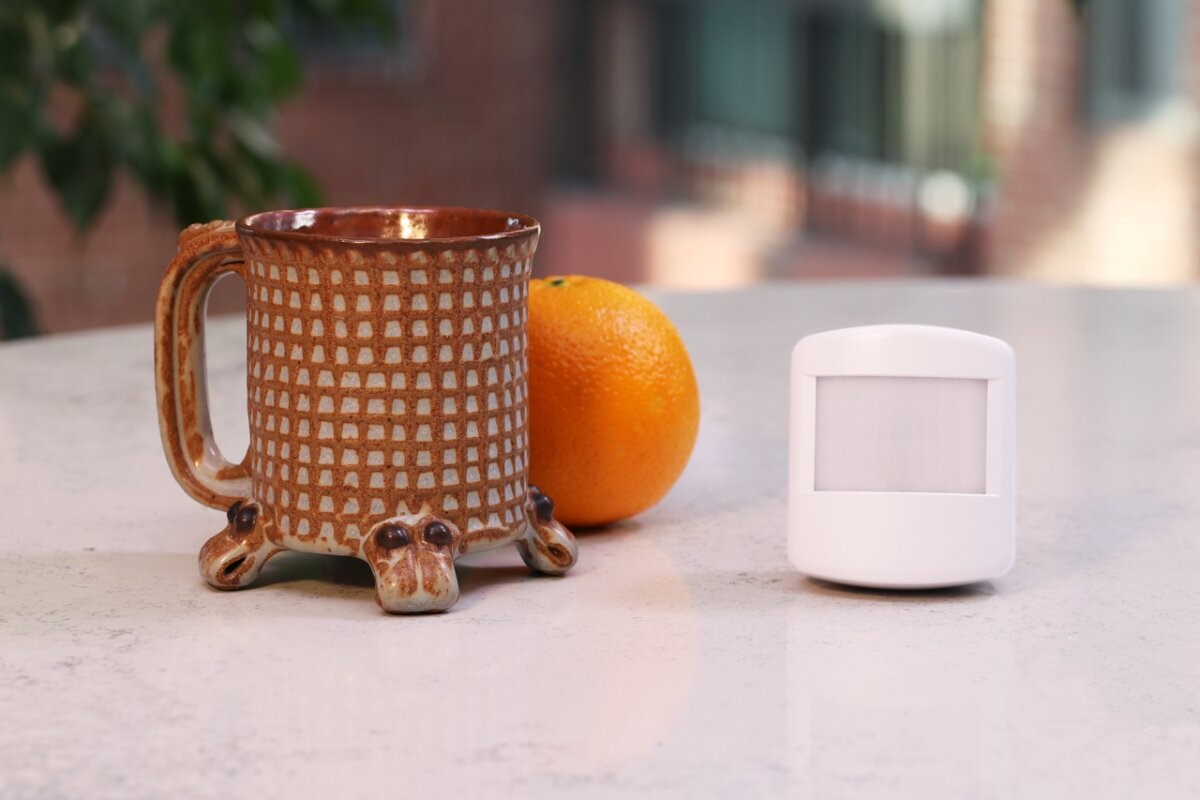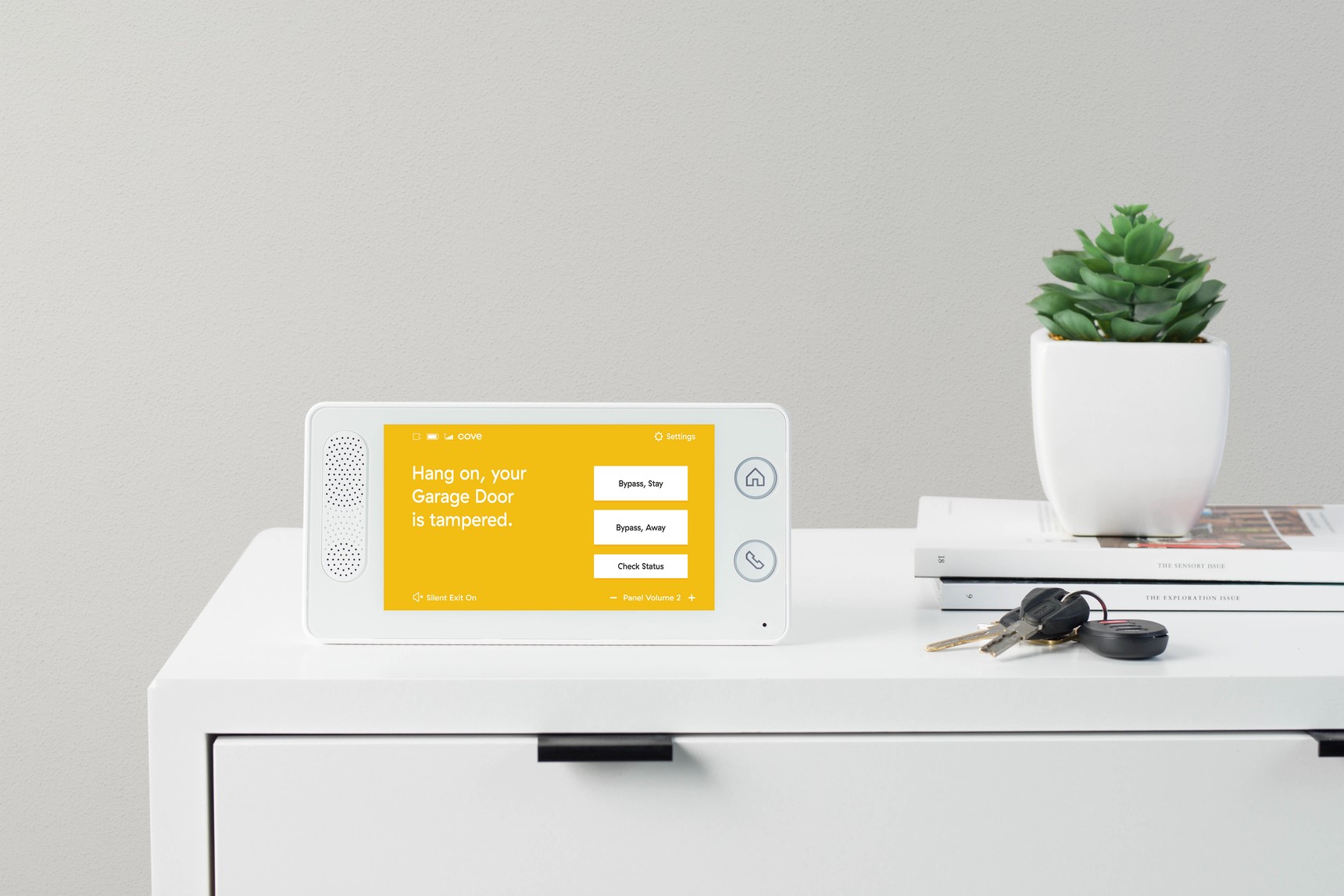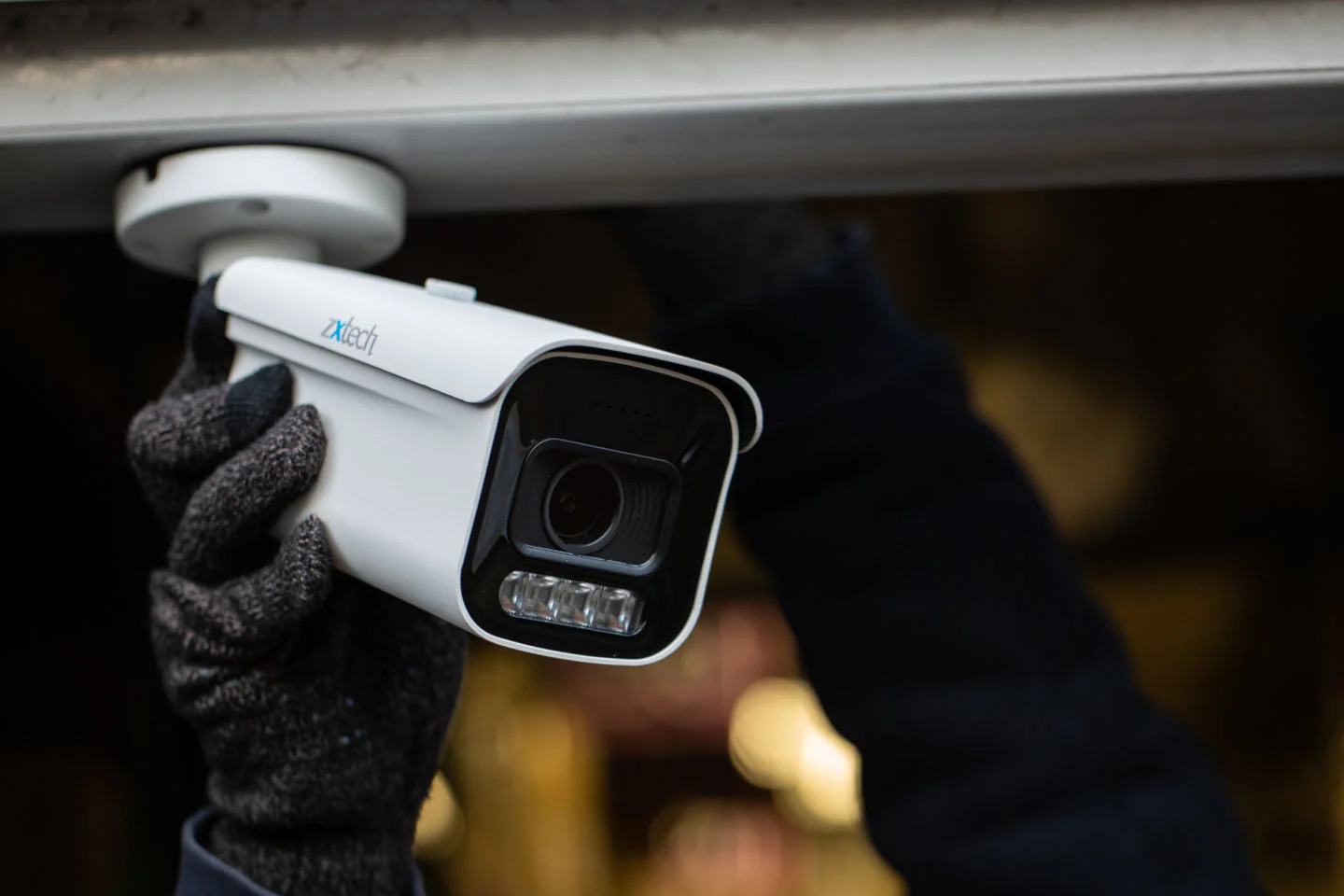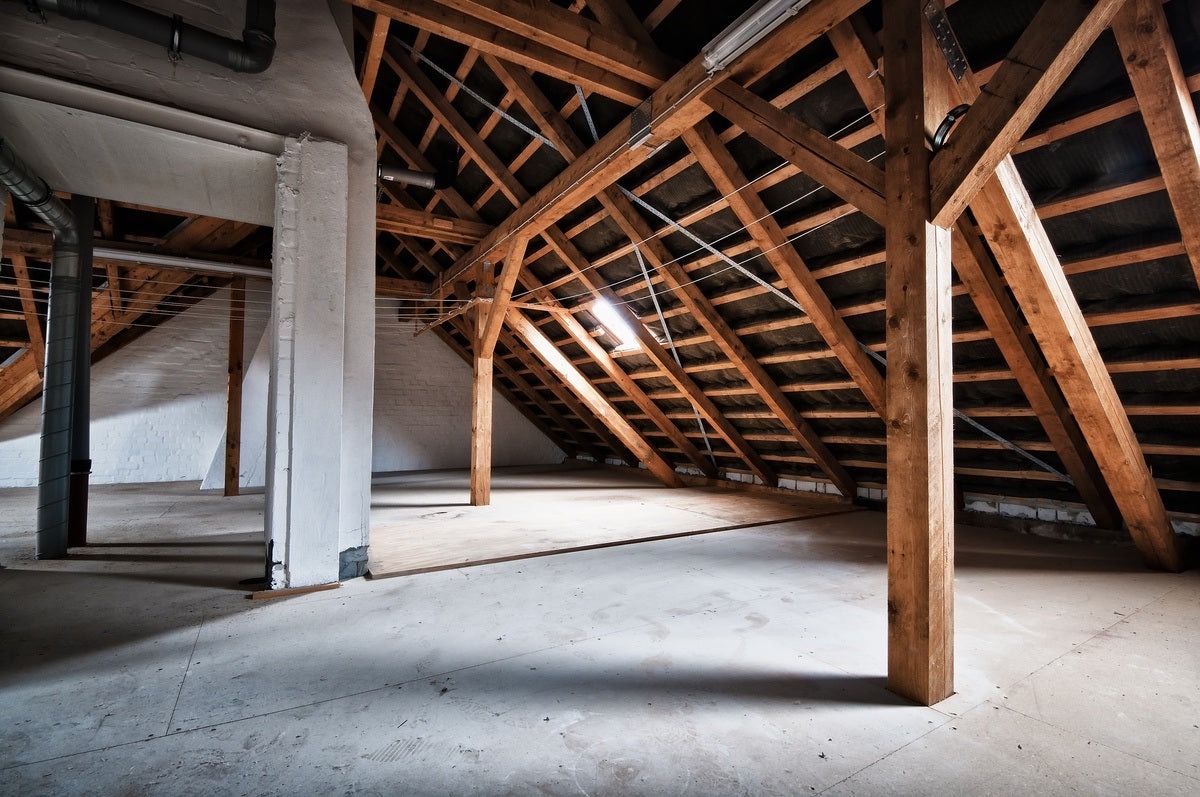Home>Home Security and Surveillance>Home Alarm Systems – What It Looks Like Unlocked
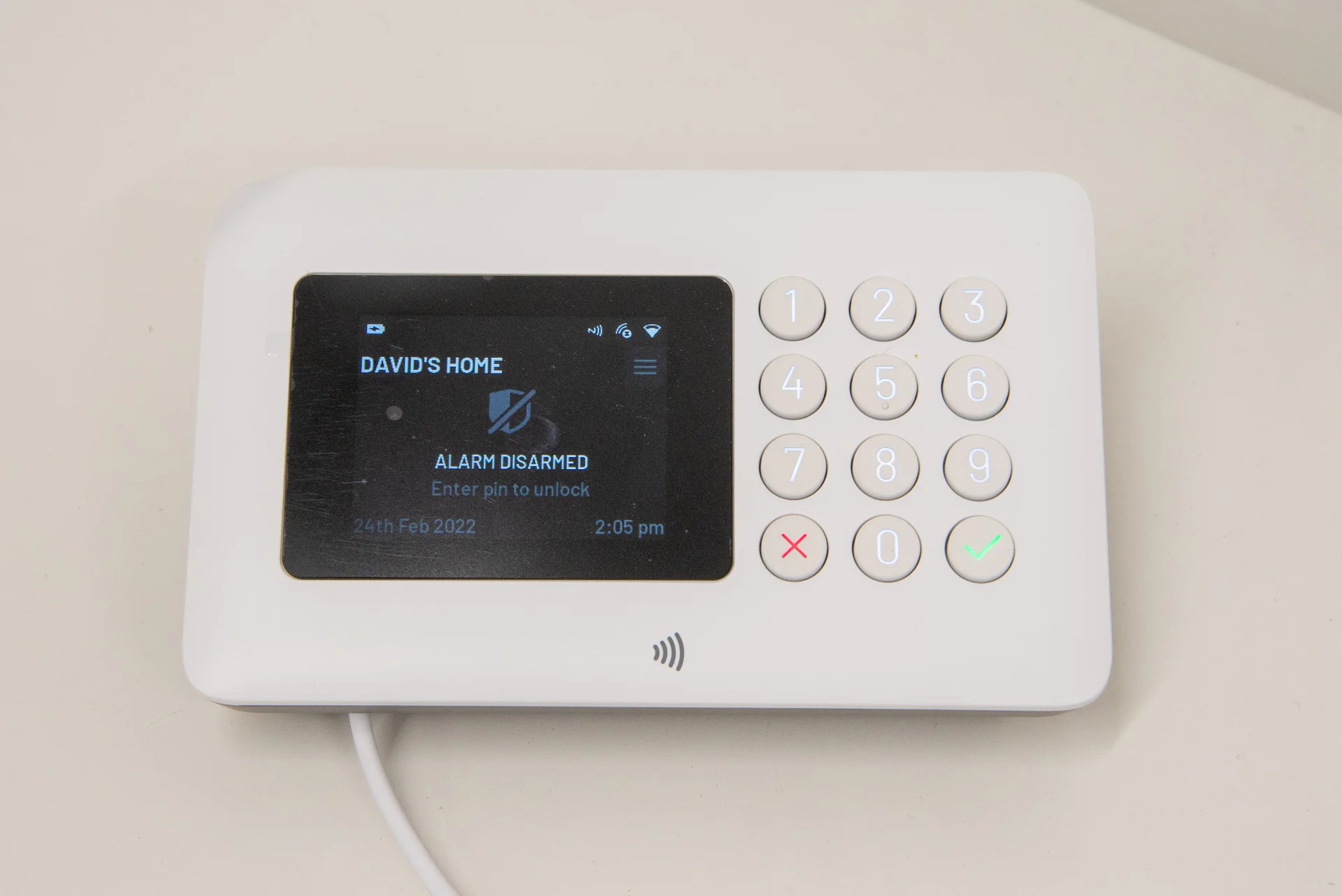

Home Security and Surveillance
Home Alarm Systems – What It Looks Like Unlocked
Modified: October 20, 2024
Ensuring the safety of your home with reliable home alarm systems. Discover what an unlocked home security and surveillance system looks like for ultimate peace of mind.
(Many of the links in this article redirect to a specific reviewed product. Your purchase of these products through affiliate links helps to generate commission for Storables.com, at no extra cost. Learn more)
Introduction
Welcome to the world of home security and surveillance! In today’s rapidly changing world, it has become essential to prioritize the safety of our homes and loved ones. Home alarm systems are a crucial component of a comprehensive security strategy, providing peace of mind and protection against potential threats.
In this article, we will delve into the fascinating world of home alarm systems, exploring their importance, types, components, and functionality. We will also provide valuable insights into how to properly arm and disarm your system, troubleshoot common issues, and offer additional tips for enhancing the security of your home.
Whether you are a homeowner, renter, or simply want to increase the safety of your living space, understanding the fundamentals of home alarm systems is paramount. So, let’s dive in and explore the world of home security to unlock the secrets to a safe and secure home.
Key Takeaways:
- Home alarm systems are crucial for protecting your home and loved ones. They deter burglaries, detect fires, and provide peace of mind, ensuring your property is monitored and potential threats are addressed.
- Understanding alarm codes, proper arming and disarming procedures, and troubleshooting common issues are essential for maximizing the effectiveness of your home alarm system. Additionally, implementing additional security measures like exterior lighting and security cameras enhances overall home security.
Read more: What Does Asbestos Insulation Look Like?
Why Home Alarm Systems are Important
Your home is your sanctuary, a place where you should feel safe and secure. Unfortunately, the reality is that threats to our homes and personal safety are prevalent in today’s society. This is where home alarm systems play a vital role in safeguarding your property and providing peace of mind.
Here are some key reasons why home alarm systems are crucial:
- Deterrence: One of the primary benefits of having a home alarm system is the deterrence factor. Studies have shown that visible security systems deter potential intruders, reducing the likelihood of a break-in.
- Protection against burglaries: Burglaries can result in significant financial loss and emotional distress. A home alarm system with sensors, cameras, and audible alarms can detect unauthorized entry and alert you and the authorities, helping to prevent burglaries and minimize losses.
- Fire detection and prevention: Many home alarm systems include smoke and heat detectors, providing early warning in case of a fire emergency. This can save lives and minimize property damage by enabling swift evacuation and alerting the fire department.
- Emergency response: In the event of a medical emergency or other types of emergencies, some home alarm systems can be integrated with professional monitoring services. This ensures that help is dispatched promptly when needed.
- Peace of mind: Knowing that your home is protected by a reliable alarm system grants you peace of mind, even when you’re away. Whether you’re at work, on vacation, or simply running errands, you can rest assured that your home is being monitored and any potential threats will be addressed.
Investing in a home alarm system is a proactive step towards protecting your home and loved ones. It not only safeguards your valuables but also serves as a deterrent, reducing the risk of criminal activity. The added layer of security and peace of mind provided by an alarm system is invaluable.
In the next section, we will explore the different types of home alarm systems available to suit various needs and preferences.
Common Types of Home Alarm Systems
When it comes to home alarm systems, there is a wide range of options available to meet different security needs and preferences. Here are some of the most common types:
- Wireless Alarm Systems: Wireless alarm systems are becoming increasingly popular due to their easy installation process and flexibility. They use wireless sensors and detectors that communicate with a central control panel via radio signals. These systems are ideal for renters or those who want a non-intrusive installation.
- Wired Alarm Systems: Wired alarm systems consist of sensors and detectors connected to a central control panel using wires. These systems are typically installed during the construction or renovation phase of a home. While they require more labor for installation, they offer a reliable and robust security solution.
- Monitored Alarm Systems: Monitored alarm systems are connected to a professional monitoring service that receives alerts in case of an emergency. When a breach is detected, the monitoring service will contact you and, if necessary, dispatch the appropriate authorities. This type of system ensures a prompt response in critical situations.
- Unmonitored Alarm Systems: Unmonitored alarm systems, also known as self-monitoring systems, send alerts directly to your smartphone or other devices when an alarm is triggered. You are responsible for taking the necessary action, such as contacting the authorities or checking on your property. These systems are cost-effective and offer more control over the monitoring process.
- Smart Home Security Systems: Smart home security systems integrate with your home’s automation and smart devices, allowing you to control and monitor your alarm system remotely. These systems can be managed through a mobile app, enabling you to arm or disarm your system, receive alerts, and view live camera feeds from anywhere in the world.
Each type of home alarm system has its own advantages and considerations. Factors to consider when choosing the right system include your budget, the level of security desired, the ease of installation, and any specific features or functionalities you may require.
In the next section, we will explore the components that make up a typical home alarm system, providing a deeper understanding of how these systems work.
Components of a Home Alarm System
A home alarm system consists of various components that work together to provide comprehensive security coverage. Understanding these components will help you make informed decisions when selecting or troubleshooting your system. Here are the key components of a typical home alarm system:
- Control Panel: The control panel is the brain of the alarm system. It receives signals from sensors, manages system settings, and triggers alarms or notifications when a breach is detected. It is usually located in a central area of the home and can be operated using a keypad or through a mobile app in the case of smart home systems.
- Sensors and Detectors: Sensors and detectors are placed at strategic locations throughout your home to detect unauthorized entry, movement, or other potential threats. Common types of sensors include door/window sensors, motion sensors, glass break detectors, and smoke/heat detectors. These devices send signals to the control panel when triggered.
- Keypad or Keyless Entry: The keypad or keyless entry system allows you to arm or disarm your alarm system using a code or a key fob. It provides a convenient way to control your system’s settings and monitor its status.
- Alarm Sirens: Alarm sirens are loud audible devices that go off when an alarm is triggered. They serve as a deterrent and alert occupants and neighbors of a potential security breach.
- Security Cameras: Security cameras are an essential component of many home alarm systems. They provide real-time video surveillance, enabling you to monitor your property remotely and record footage for evidence in the event of an incident. With advancements in technology, many systems now offer high-definition cameras with night vision and two-way audio capabilities.
- Monitoring Options: Depending on the type of system you choose, you may have options for professional monitoring services. These services provide 24/7 monitoring of your alarm system and can contact emergency services on your behalf when necessary.
- Mobile App Integration: Smart home alarm systems often come with mobile app integration, allowing you to control and monitor your system from your smartphone or tablet. With the app, you can arm or disarm the system, receive real-time notifications, view camera feeds, and even control other smart home devices.
These components work in harmony to detect and deter potential threats to your home’s security. It is important to ensure that all components are properly installed and regularly maintained to ensure the optimal performance of your home alarm system.
In the next section, we will discuss alarm codes and passwords and their significance in securing your system.
Understanding Alarm Codes and Passwords
When it comes to home alarm systems, alarm codes and passwords are essential components of the security measures in place. They provide authorized access to the system and help prevent unauthorized individuals from tampering with or disabling the alarm. Understanding how alarm codes and passwords work is crucial for ensuring the integrity and effectiveness of your home security. Here’s what you need to know:
Alarm Codes:
An alarm code is a numerical password or sequence of characters that is used to arm, disarm, or access the settings of your home alarm system. Each user in the household can have their own unique code, allowing for individual accountability and monitoring. It is important to choose a code that is easy for you to remember but not easily guessable by others.
When setting up alarm codes, consider the following:
- Choose a code that is at least 4-6 digits long to ensure sufficient security.
- Avoid using obvious codes like your birthdate or phone number.
- Regularly change your code to enhance security and prevent unauthorized access.
- Do not share your code with others unless necessary, and only provide it to trusted individuals.
Master Code:
In addition to individual user codes, most home alarm systems have a master code. The master code is generally used to perform administrative functions like adding or deleting user codes and changing system settings. It is important to keep the master code confidential and secure. If someone gains access to your master code, they could potentially compromise the entire security system.
Passwords:
In addition to alarm codes, some home alarm systems may also require a login password to access the system settings or mobile app. Passwords should follow best practices for strong security, including:
- Use a combination of uppercase and lowercase letters, numbers, and symbols.
- Avoid using common words or phrases that can be easily guessed.
- Ensure your password is at least 8-12 characters long.
- Regularly update your password and avoid reusing it across multiple platforms or devices.
By understanding the importance of alarm codes and passwords and following best practices for their usage, you can enhance the security of your home alarm system and safeguard your property and loved ones.
In the next section, we will explore how to properly arm and disarm your home alarm system to ensure optimal security.
Make sure to always lock your home alarm system when you leave the house. This will help keep your home and belongings safe from potential intruders.
Read more: What Does Mold On Insulation Look Like
How to Properly Arm and Disarm Your Home Alarm System
Knowing how to properly arm and disarm your home alarm system is essential for ensuring its effectiveness in protecting your home. Here are some steps to follow:
Arming Your Home Alarm System:
- Ensure all windows and doors are securely closed and locked.
- Enter your assigned user code or use your key fob to arm the system. Some systems also allow for arming via a mobile app.
- Choose the appropriate arming mode based on your needs:
- Away Mode: This mode is used when no one is at home. It covers all entry points and activates motion sensors.
- Home Mode: This mode is used when you are inside the home but want the perimeter protected. It typically excludes motion sensors.
- Night Mode: This mode is used when you are inside the home and sleeping. It may activate certain sensors while deactivating others.
- Once the system is armed, you will usually hear a confirmation tone or receive a notification indicating that it is armed.
Disarming Your Home Alarm System:
- Approach your control panel or use your key fob or mobile app to disarm the system.
- Enter your user code or use the appropriate method to disarm the system.
- Once disarmed, the system will typically provide a confirmation tone or notification to indicate that it is disarmed.
It is important to familiarize yourself with the specific arming and disarming procedures of your home alarm system. You may refer to the user manual or consult with the manufacturer or installer for detailed instructions.
Additionally, it is crucial to share the proper arming and disarming procedures with all household members and trusted individuals who need access to the system. This will ensure that everyone knows how to operate the alarm system effectively and reduce the risk of false alarms or accidental triggers.
By following these steps, you can ensure that your home alarm system is armed when needed to provide optimal security, while also allowing for convenient and effortless disarming when you return home.
In the next section, we will discuss common issues that may arise with home alarm systems and how to troubleshoot them.
Troubleshooting Common Issues with Home Alarm Systems
Home alarm systems are designed to work flawlessly, but occasionally, you may encounter some common issues. Here are some troubleshooting steps to help you resolve these problems:
False Alarms:
- Check for loose or faulty sensors: Ensure that all sensors, including door/window sensors and motion detectors, are securely in place and functioning properly.
- Verify system settings: Make sure the sensitivity levels of motion sensors are appropriately adjusted to avoid false triggers from pets or other benign movements.
- Address environmental factors: External factors like strong drafts or direct sunlight may cause false alarms. Adjust sensor positioning or use protective covers, if necessary.
System Malfunctions:
- Check power supply: Ensure that the control panel and sensors have power. Check if the power cables are securely connected or batteries need replacement.
- Reset the system: Try rebooting the control panel by disconnecting its power source and then reconnecting it after a few minutes.
- Contact technical support: If the issue persists, contact your alarm system provider’s technical support for further assistance in diagnosing and resolving the problem.
Communication Problems:
- Ensure network connectivity: If you have a wireless or smart home alarm system, check that your home’s Wi-Fi network is working properly.
- Check signal strength: If you are using a cellular-based alarm system, ensure that you have a strong cellular signal in your area. Consider installing a signal booster, if needed.
- Reset network devices: Reboot your modem, router, or any network extenders to refresh the network connection and troubleshoot any connectivity issues.
Keypad or App Issues:
- Check for touchscreen responsiveness: Clean the touchscreen interface to eliminate any smudges or dirt that may be affecting its sensitivity.
- Update or reinstall the mobile app: If you are using a mobile app to control your alarm system, make sure it is up to date. If issues persist, try uninstalling and reinstalling the app.
- Reset the keypad or app: Power cycle the keypad or log out and log back into the app to refresh the connection and resolve minor glitches.
If you have followed these troubleshooting steps and are still experiencing issues with your home alarm system, it is recommended to reach out to your alarm system provider or a professional technician who can diagnose and resolve the problem.
In the next section, we will provide additional tips to enhance the security of your home in conjunction with your alarm system.
Additional Tips for Enhancing Home Security
In addition to having a reliable home alarm system, there are several other measures you can take to enhance the security of your home. By implementing these additional tips, you can create multiple layers of protection against potential threats. Here are some suggestions:
1. Improve Exterior Lighting:
Install motion sensor lights around the perimeter of your home to deter intruders. Adequate lighting eliminates dark hiding spots and increases visibility.
2. Reinforce Entry Points:
Upgrade your doors and windows with sturdy locks, deadbolts, and reinforced frames to make it more difficult for burglars to gain access to your home.
3. Secure Sliding Doors and Windows:
Install security bars or rods to prevent sliding doors and windows from being forced open. Place a stick or rod in the track to prevent unauthorized entry.
4. Install Security Cameras:
Install surveillance cameras in strategic locations to monitor and record activity around your home. Visible cameras act as deterrents and provide valuable evidence in case of an incident.
5. Use Timer Lights and Smart Home Automation:
Set up timer lights or utilize smart home automation to mimic activity inside your home when you’re away. This gives the illusion that someone is present, deterring potential intruders.
6. Maintain Landscaping:
Trim shrubs and trees around your property to eliminate potential hiding places and improve visibility. Well-maintained landscaping reduces the risk of intruders approaching undetected.
7. Build a Neighborhood Watch:
Connect with neighbors to create a strong community network focused on keeping each other safe. Communicate any suspicious activities or incidents promptly to ensure a vigilant and secure neighborhood.
8. Secure Your Wi-Fi Network:
Protect your home network with a strong, unique password. Enable encryption and consider setting up a guest network separate from your main network for added security.
9. Locks and Safes:
Use quality locks on gates, sheds, and other exterior structures. Invest in a home safe to securely store valuable items such as jewelry, important documents, and cash.
10. Practice Situational Awareness:
Be aware of your surroundings and report any suspicious activities to the appropriate authorities. Trust your instincts and take necessary precautions to ensure personal safety.
By implementing these additional security measures, you can create a well-rounded approach to home security that complements your home alarm system and provides comprehensive protection for your property and loved ones.
To conclude, maintaining a secure home is a continuous effort that requires a combination of measures, including a reliable home alarm system, proper arming and disarming procedures, troubleshooting common issues, and implementing additional security tips. With these measures in place, you can have peace of mind knowing that you are taking proactive steps to protect your home and ensure the safety of your family.
Conclusion
Home security is a top priority for homeowners, renters, and anyone who wants to ensure the safety of their living space. Home alarm systems are essential components of a comprehensive security strategy, providing protection against potential threats and offering peace of mind.
In this article, we explored the importance of home alarm systems and how they deter burglaries, detect fires, and offer emergency response capabilities. We discussed the various types of home alarm systems, including wireless, wired, monitored, unmonitored, and smart home security systems.
We also learned about the key components of a home alarm system, including the control panel, sensors, keypads or keyless entry systems, alarm sirens, and security cameras. Understanding these components is vital for the proper functioning of your alarm system.
Furthermore, we discussed the significance of alarm codes and passwords in securing your home alarm system. By choosing strong codes and passwords, you can safeguard your system from unauthorized access and enhance its effectiveness.
We then explored the proper procedures for arming and disarming your alarm system, ensuring that you can effectively manage its functionality while maintaining a convenient and secure environment.
Moreover, we provided troubleshooting tips for common issues that may arise with your home alarm system, empowering you to address false alarms, system malfunctions, communication problems, and keypad or app issues.
To further enhance the security of your home, we offered additional tips, such as improving exterior lighting, reinforcing entry points, installing security cameras, and practicing situational awareness.
In conclusion, a comprehensive approach to home security involves a combination of measures, including a reliable home alarm system, proper usage and troubleshooting, and additional security enhancements. By implementing these strategies, you can create a safe and secure environment for you and your loved ones, providing peace of mind and ensuring the protection of your most valuable assets.
Remember, home security is an ongoing process, and it is important to stay updated with the latest advancements in home alarm systems and security practices. By prioritizing home security, you are taking an active role in safeguarding your home and creating a secure living space for yourself and your family.
Frequently Asked Questions about Home Alarm Systems - What It Looks Like Unlocked
Was this page helpful?
At Storables.com, we guarantee accurate and reliable information. Our content, validated by Expert Board Contributors, is crafted following stringent Editorial Policies. We're committed to providing you with well-researched, expert-backed insights for all your informational needs.
